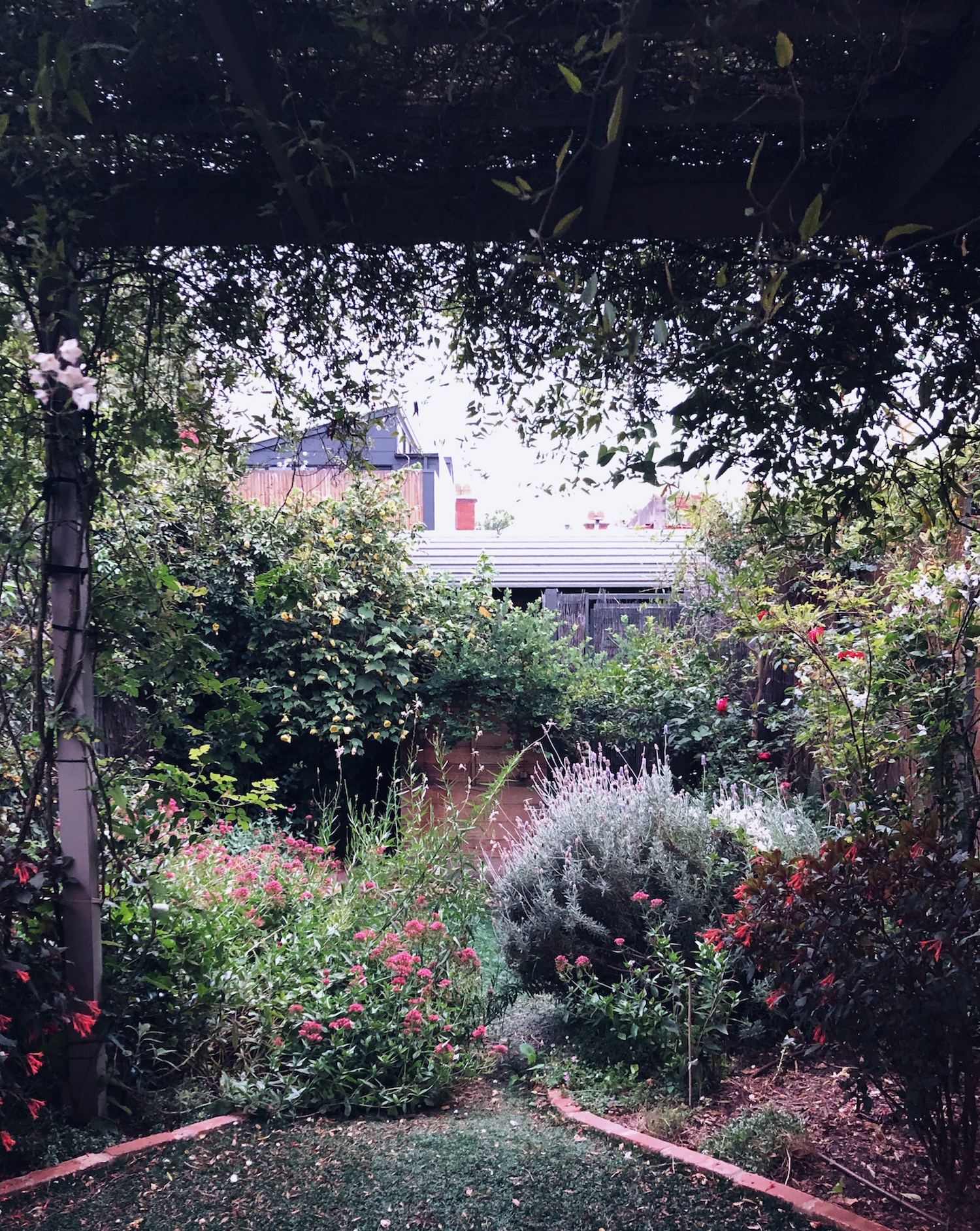Lessons from the summer garden
I have been waiting for the weather to cool.
The summer’s evening we returned home from France, I stood in my little garden in the shocking humidity, and took these pictures. It was a jungle. Abundant and overgrown, some plants thriving and other plants choking, and I made plans to gently nurture it back to life. My very own Secret Garden.
I made a start, cutting back the valerian and unwinding the clematis so the other plants could breathe. There was no saving the blueberry bush, one of the hydrangeas or two of the camellias. Two out of three of the Japanese maples were looking decidedly sad.
But I still held out hope for the roses, the pomegranate, and my favourite oak-leaf hydrangea, and the honeysuckle was so healthy it had all-but swallowed the children’s cubby house whole.
But instead of making it better, I only made things worse. Clearing away the overgrown vines left my space-starved plants vulnerable when the heat came - and come it did, less than a week later, in waves of day after day with temperatures in the late 30s and early 40s, Celsius.
No amount of water can keep alive a plant that is being literally burned from the sky. One of my happily-blooming fuchsias was the first to go. At the end of one particularly long, hot day (long after dark it was still 36 degrees), every leaf had turned brown. When I cupped the leaves in my hand, they fell from the stems and crumbled to dust.
The little Jack Frost plants soon followed suit, and most of the Japanese windflowers. Soon my gardenias were looking sad, the oak-leaf hydrangea crisped at all the edges, and the leaves began dropping off the Japanese maple.
None of the border plants survived, and brown began to swallow green.
The poets of ancient Jerusalem wrote, “To everything there is a season.” (Or were they quoting Pete Seeger?) And nowhere is that more evident than in an actual garden, where the seasons govern, and human intervention can only go so far in changing or mitigating what nature intends.
One of the things I noticed about the public flower gardens in France was that in spring and summer, they were more beautiful than anything you could imagine: full of shocking, extravagant colour like a fragrant, bee-filled rainbow explosion. But when autumn came and the seed-heads drooped, gardeners cut everything back, aerated the ground, and let it rest for the cooler months. It wasn’t pretty: brown patches of earth with the odd leftover strand of sad annual eking out the last of its days.
We don’t tend to do that in Australia. We plant and tend for year-round cover, and seek colour in every season. I know I’ve tried this in my own little garden, filling those brown patches as best I can in winter so we only look out on green.
But respecting the season means working with nature, rather than fighting it.
Those plants in my garden shouldn’t have been left to smother one another but, once it was done, I should have known better than to strip things bare right when the worst of the heat was about to begin. And I had known it would begin: January and February where I live are the hottest months of the year.
But I was impatient, eager to reconnect with my home by putting my hands in the earth, and I wouldn’t wait. In many parts of Europe, brown and grey are the colours of winter. I made them the colour of Melbourne in summer, too.
Gardens teach us patience, if we will let them. To everything there is a season. There is a season for brown, and a season for colour. A season for hot, and a season for cold.
A season for abundance, and a season for rest.
My friend Brenner and I send one another voice-messages most days, little audio missives that carry with them the ambience of our respective worlds. In mine, while soaring temperatures burn everything around me and sting my eyelashes, there is a heartbreaking crunch of dry things underfoot as I walk and talk. In Brenner’s messages, sent to me from her home in tropical far-north Queensland, I hear frogs and cicadas, and the soft and ever-present sound of rain. Up there, these seasons aren’t spring-summer-autumn-winter. They are known as the wet season, and the dry.
Nature comes back.
Even my burnt plants will re-shoot leaves. And if they don’t, others will clamber over and take their place.
So I will wait. When the weather cools, I will replant but, when winter comes, I will allow my garden to rest. To lie fallow, the way nature intended. It’s ok, I will remind it, to be brown.
Come spring, I hope I can bring you a rainbow.






